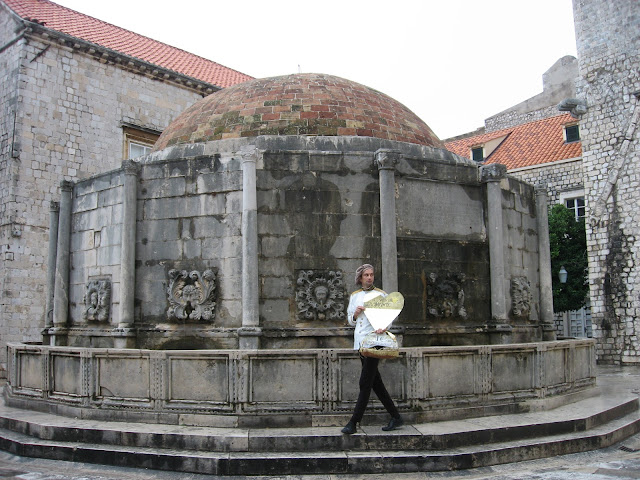Since I started collecting antique pottery over 30 years ago, I am often asked what and why do I collect. I will explain the "what" later. As to the "why" do I collect pottery? After being asked this question repeatedly I’ve decided to articulate it the best I can. As you will discover, some of the reasons are pretty universal. Why does anyone collect anything? Here are my top five reasons, in no particular order.
Beauty - Pottery is an art. Creating a pottery piece is labor intensive. A number of steps and devotion goes into its creation. I appreciate the skill and artistic vision required to produce an aesthetically pleasing piece of art.
Memories - As a kid I would often accompany my mother to antique stores, flea markets and garage sales. I had a happy times going to auctions and estate sales. Perhaps picking through these items takes me back to that time?
Imagination - When I find and buy a piece, of let’s say Czechoslovakian pottery, my imagination begins to travel back, through time. I dream of the time period in which it was created. Who specifically had there hands in its birth? Where may this piece have traveled since it was created? Who and how many people may have owned it. What was it used for? How long will this pottery item exist current form?
My Hunt- There is a certain rush of adrenaline associated with finding a piece of antique pottery for my collection on an antique store shelf. The excitement of picking it up and checking it's condition while glancing over the ridiculously low price is fun. A sense of personal satisfaction comes with purchasing a piece of pottery for a few dollars, while knowing that the item is valuable to collectors. Looking for antique pottery is fun. It takes me to different towns, cities even different countries and out of way places. While in the hunt there are many different things to see, new locations to explore and interesting people to meet.
Value - Antique pottery can be quite valuable. Hoarding a collection of worthy pieces is as good as having a savings account, although I hope I don't have to cash it.
Now for the "what" do I collect. I have many collections, Czech pottery, Elfinware, Crown Staffordshire are just a few. I am going to share with you some information on my Crown Staffordshire collection.

Crown Staffordshire porcelain acquired its name in 1897 as the successor name to what began in 1833 as Thomas Green bone china at Minerva China Works, Park Street, Fenton in England. Green's father also had been known as a maker of pottery as far back as 1790. Keeping the business in the family, Thomas Green the younger employed his wife and four sons at Minerva Works until his death in 1859.
His widow, Margaret, and four sons then ran the business for the ensuing 17 years. In 1897 the name Crown Staffordshire first appeared in the title of the firm and in 1903 it became a limited company under the name Crown Staffordshire Porcelain Co. Ltd. By the turn of the century, the company were producing a wide range of bone china products including dinner ware, tea and coffee ware, miniatures, vases, cutlery handles, door furniture and floral china baskets. In the late 1920s Crown Staffordshire pioneered the large scale production of china floral ornaments and china costume jewellery for which they became famous.
The Green family remained connected with Crown Staffordshire until the mid 1960's, when the company became part of Wedgwood. But this was not before the company had expanded internationally to The United States and Canada, supplying such diverse products as Pan yellow-glazed tableware, and even porcelain fighting badges for combatants in two world wars. The Crown Staffordshire mark ceased being used in 1985.
The Art Director at Crown Staffordshire for over thirty years was J T (Jack) Jones. Born in 1898 Jack Jones joined Crown Staffordshire at the age of thirteen and worked for the company for forty-seven years. At the time of his death he was described as one of the leading designers of bone china table ware, but today he is probably known best for the range of bird groups that he designed for Crown Staffordshire. These ranged from large cockatoo figures to tiny wrens.



If you are thinking of starting a collection, spend time developing relationships with antique dealers in the area where you live. Although it is certainly possible to find good deals online, eBay has becaome a favorite of mine. For some it may be safer and more convenient to make your purchases from a local merchant so that you can actually see and handle the pieces before you buy them. If you explain to antique dealers what you are looking for, many will be willing to keep their eyes out for pieces that suit your needs.




I hope you enjoying seeing my collection. I will show you more of my collections in the future. If you have a collection to share let me know via email and I will post share other collections here.
- Posted using BlogPress from my iPad
















































